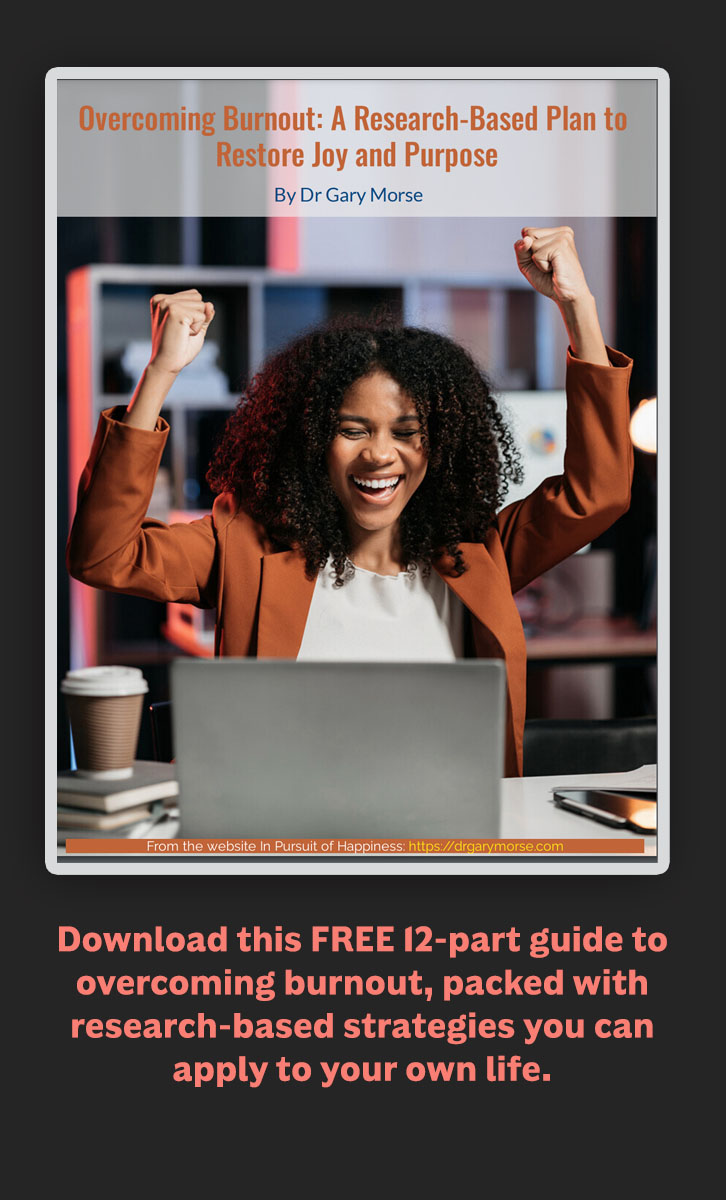Remembering to regularly engage in the personal activities that renew your energy will build your resilience to burnout, as this eleventh post in the Overcoming Burnout Series describes.
You can combat burnout by using the seven major types of strategies and skills described in prior posts. (This does not mean you have to use all seven–that itself could be stressful and overwhelming! Instead pick and choose whatever works best for you).
These strategies include:
1. Using “contemplative practices” that create the relaxation response
2. Using cognitive behavioral strategies to identify and change your thoughts that trigger or exacerbate burnout.
3. Rediscovering and sharpening your personal sense of meaning and purpose for your work
4. Reclaiming control of your time by setting compassionate boundaries and deftly using a schedule to focus on your priorities.
5. Learning simple physical strategies like desk chair yoga.
6. Learning and using an effective method for positively resolving workplace conflicts.
7. Creating your own daily mini-practices for stress reduction and renewal.
These seven strategies can go a long way in defending against burnout and improving your work well-being.
And even more skills are possible.
In the upcoming book, Finding Purpose in a Burned Out World: How You Can Overcome Burnout. you will learn 25 skills and more then 50 techniques to reduce stress and burnout.
Again, you certainly do not need to use all of these methods–no one will. But they will provide you with a rich set of options from which you can craft your own personal set of coping skills to reduce stress and improve your well-being.
But chances are, you still possess more of your own, natural practices for bringing you renewal and buffering burnout.
Consider this question for a moment:
What else do you do—or, have you done—that builds your resiliency to stress and renews your energy and joy?

Curious Collectibles from Pixaby
In BREATHE training workshop exercises, many people have come to remember that they used to do certain personal activities that left them feeling re-energized and happier–and that these feelings then carried over to work and left them more relaxed and stress-hardy.
Workshop participants talked about feeling better when they used to regularly engage in past activities such as listening to live music, playing the guitar at home, or attending yoga classes.

Photo by Bruce Mara on Unsplash
But people noted that at some point they simply got busy or distracted and then forgot to take part in the activities that once brought them relaxation, renewal, and joy.
For these individuals, building their resilience to stress and burnout was as simple as remembering and returning to the activities that previously brought them relaxation and joy, although sometimes this took a bit of planning to bring these activities back into regular use.
And many other individuals in BREATHE workshops shared how they sometimes engage in personal activities that bring them both joy and increase their hardiness to stress—but just not regularly as they’d like.
For example, many people have shared how renewing it is to take the dog out for a walk after work and stated how they would feel better and healthier if they did this each day (undoubtedly, the dogs would enjoy this too!).

Photo by Megan Bucknail on Pexels
For others, renewing and building their stress resilience involves regularly going to the gym for exercise, reading for pleasure (or even listening to an audio book in the car on the daily commute), or simply spending time outdoors to witness the sunset or feel the evening breeze.
The above examples of some of the activities that BREATHE participants have shared that help them.
But there is no shortage of possible activities that bring us joy and renewal—and build our immunity to stress and burnout.
The most important activities are the ones that work for you.
In addition to the strategies and skills for combating burnout that we have discussed in previous posts, what has helped in the past to bring you renewal or peace while improving your mood and buffering you against stress?
Also, are there other activities that you sometimes do now that help, but that you could engage in more frequently to increase your stress resistance and help your well-being?
Finally, use your imagination. Are there activities that you haven’t yet done but which seem like they would be fulfilling and relaxing? Activities that might make you emotionally stronger and prevent burnout?
Activities will vary widely from person to person. For one individual, woodworking or pottery making might be relaxing; for another, it might be simply going for a walk in the park; and for someone else, it can be hand work such as crocheting or knitting. The possibilities are nearly endless and are up to you to choose.

Photo by Janesca on Unsplash
Can you experiment with these possibilities?
Can you try at least one out this week and see how it leaves you feeling at work and in your life in general?
Brainstorm possibilities, and develop an action plan.
Then do the activities that you enjoy and love.
And watch how they reduce your stress level and improve your well-being, including at work.
Lead Photo by Ben White on Unsplah.



Follow Me: